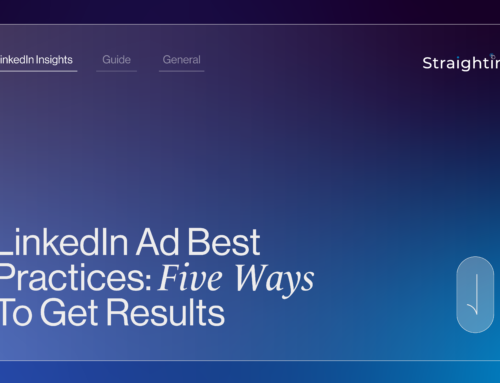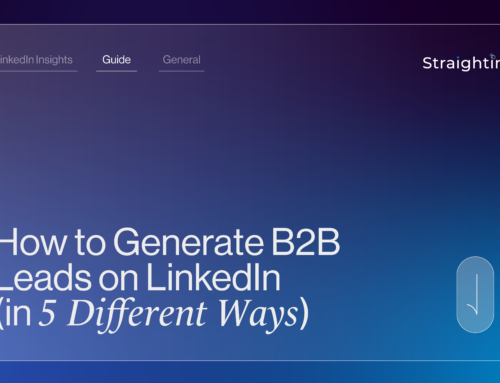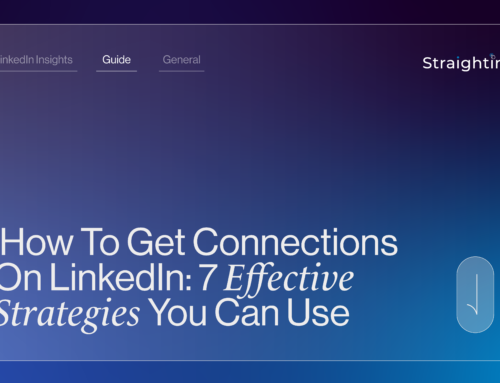Chances are you are familiar with Instagram influencers, who are often paid to promote products to their large followings. LinkedIn has its own unique version of influencers. LinkedIn influencers, however, are very different from their Instagram counterparts. They are not using the platform to endorse cosmetic products, diet pills, or anything else. They’re savvy business professionals who have built a massive following and wield immense influence on the platform. Think of figures like Bill Gates, Richard Branson, Neil Patel, and so on. These are all individuals who have established themselves as thought leaders and experts in their respective industries, with people turning to them for their expertise and advice.
This brings us nicely onto the hot topic of thought leadership. In the current landscape, thought leadership has become an important talking point. The emergence of social media platforms, particularly LinkedIn, has presented professionals with a remarkable chance to establish their authority and wield influence within their industries. But what actually is it, and why does it matter?
In this article, we will explore the concept of thought leadership and its significance today, especially for CEOs and business owners. We will also discuss the unique opportunities social media platforms offer, specifically LinkedIn. And if you hang around to the end, we will also share with you some effective strategies you can use to leverage LinkedIn to its full potential.
What is thought leadership, and what are the benefits?
Thought leadership centres around creating and delivering genuine and authentic content, drawing upon the author’s expertise, insights, and experiences to provide value to their audience. Its main objective is to share valuable wisdom with others while emphasising value creation, expanding knowledge, and taking a stand. This is precisely why LinkedIn is the ideal platform for CEOs, executives, and other business professionals seeking to establish themselves as thought leaders. Doing so is not only good for furthering your career, but it is also great for your company to generate revenue and attract top talent.
Let’s break down some of the benefits that can be unlocked for CEOs and business owners if they establish themselves as thought leaders.
Attracting top talent
In today’s digital landscape, it has become increasingly important for companies to have their executives actively involved in thought leadership on social media. This is because it allows them to shape a compelling and collaborative brand story and, in doing so, attract the best talent.
The findings of the 2022 Connected Leadership study underscore the significance of effective communication by business leaders through social media. The study revealed that 82% of employees consider it absolutely crucial for business leaders to effectively communicate their company’s vision and values through social media.
The impact is profound: employees are four times more likely to choose to work for CEOs who actively engage on social media. By being active on LinkedIn and other social platforms, sharing valuable experiences, and positively representing your business and brand, you can attract top talent and showcase your organisation’s strengths.
Generate revenue
In addition to attracting top talent, thought leadership on social media can play a pivotal role in establishing trust and credibility, making executives and their organisations more appealing to potential clients.
When executives actively engage in thought leadership, consistently sharing valuable insights and expertise, they position themselves as trusted authorities in their industry. This consistent presence and valuable content build a reputation of credibility and expertise. Potential clients who come across this thought leadership content are more likely to view the executive as knowledgeable and trustworthy, increasing the likelihood of initiating a business relationship.
Thought leadership also provides an opportunity for executives to showcase their problem-solving skills and innovative thinking. By addressing industry challenges, offering practical solutions, and sharing success stories, executives demonstrate their ability to navigate complex issues and provide value to clients. This builds confidence and establishes credibility, as potential clients can see the executive’s expertise in action.
The trust and credibility established through thought leadership on social media translate into tangible benefits for the business. This increased trust can lead to more clients signing up, resulting in expanded business opportunities and, ultimately, increased revenue.
Career opportunities
Engaging in thought leadership on social media can bring personal benefits beyond just the growth of your business. Building a strong online presence opens up a world of new opportunities that can significantly enhance your professional journey.
Firstly, establishing yourself as a thought leader on social media can increase your visibility and reputation within your industry. This heightened visibility can lead to invitations for speaking engagements at conferences, exhibitions, or industry events. Being recognised as an authoritative figure in your field, you may have the opportunity to share your expertise, insights, and experiences with a broader audience. Speaking engagements provide a platform to showcase your thought leadership, network with industry peers, and further solidify your personal brand.
Moreover, your active presence as a thought leader on social media can attract the attention of industry awards and recognition programs. By consistently delivering valuable content and showcasing your expertise, you may become eligible for various awards that recognise outstanding contributions to your field. These accolades not only validate your expertise and efforts but also provide further opportunities for visibility and networking within your industry.
Thought leadership can also open doors to writing opportunities in respected publications. Your online presence and demonstrated knowledge can capture the attention of editors and publishers, leading to invitations to contribute articles, blog posts, or opinion pieces. Writing for respected publications further establishes your credibility and expands your reach to a wider audience. It also allows you to contribute valuable insights to industry conversations and establish yourself as a trusted source of information.
As a thought leader, you may be approached for collaborations, partnerships, or advisory roles. Other professionals, businesses, or organisations may seek your guidance or expertise on specific projects or initiatives. These collaborative opportunities not only enhance your professional network but also provide avenues for growth and development beyond your own business.
So, there you have it: there are many benefits, both personal and for your business, for CEOs and executives who aspire to establish themselves as thought leaders. Now, the question is, how do you achieve that?
How to use LinkedIn to establish yourself as a thought leader?
To begin with, let’s explore why LinkedIn is the platform of choice. LinkedIn is the largest professional networking platform globally, with over 930 million members across more than 200 countries and territories worldwide. It serves as a hub for business professionals to connect with like-minded individuals, exchange advice and experiences, and discover new business opportunities. Given its vast reach and specific focus, LinkedIn presents an ideal platform for CEOs, executives, and business owners who are seeking to make a significant impact.
LinkedIn also provides a range of exciting options for professionals to share their expertise through diverse content formats:
- LinkedIn posts provide a platform for concise and impactful sharing of insights, tips, and industry updates. They allow you to capture attention with short and engaging snippets of information. By consistently posting valuable content, you can establish yourself as a go-to source for industry knowledge and build a dedicated following.
- Visual content, including infographics, charts, and illustrations, can effectively convey complex information in a visually appealing manner. Images are eye-catching and can quickly communicate key messages, making them highly shareable. They can help you break down intricate concepts and engage your audience in a more visually stimulating way.
- Video content on LinkedIn has gained tremendous popularity due to its ability to captivate and engage viewers. You can leverage videos to share tutorials, industry insights, interviews, or thought-provoking discussions. Videos allow you to showcase your personality, present compelling narratives, and provide a more immersive experience for your audience. Videos have also been proven to capture audiences’ attention in their feeds, and that audience is 20x more likely to share them than any other type of post, making it an effective means to grow your following.
- Sharing documents such as white papers, case studies, research reports, or one-pagers can establish your thought leadership by offering in-depth analysis and valuable resources. Documents demonstrate your expertise and provide authoritative information that can educate and empower your audience.
- LinkedIn’s article publishing feature enables you to write long-form content where you can delve into complex topics, share comprehensive insights, and present thought-provoking arguments. Articles showcase your expertise, demonstrate your ability to articulate ideas in-depth, and position you as a trusted authority within your industry.
- Maintaining regular newsletters allows you to nurture a dedicated audience by providing exclusive updates, curated content, and valuable industry insights. Newsletters create a direct channel of communication with your connections and followers, reinforcing your thought leadership and keeping your audience engaged and informed.
By using these different content formats on LinkedIn, you can demonstrate your expertise in various ways and cater to the preferences of different audiences. The key to establishing credibility and building a loyal following lies in maintaining consistency, providing relevant content, and ensuring high quality.
Remember that engaging with your audience directly by responding to comments and actively participating in relevant discussions also helps further strengthen your position as a thought leader.
Final thoughts
In summary, by embracing thought leadership on LinkedIn, professionals can elevate their personal brand, drive business growth, attract top talent, and unlock new opportunities. The journey to becoming a thought leader involves sharing valuable insights, actively engaging with the audience, and leveraging LinkedIn’s unique features and content formats.
So, seize the potential of LinkedIn, cultivate your thought leadership, and make a lasting impact in your industry.






